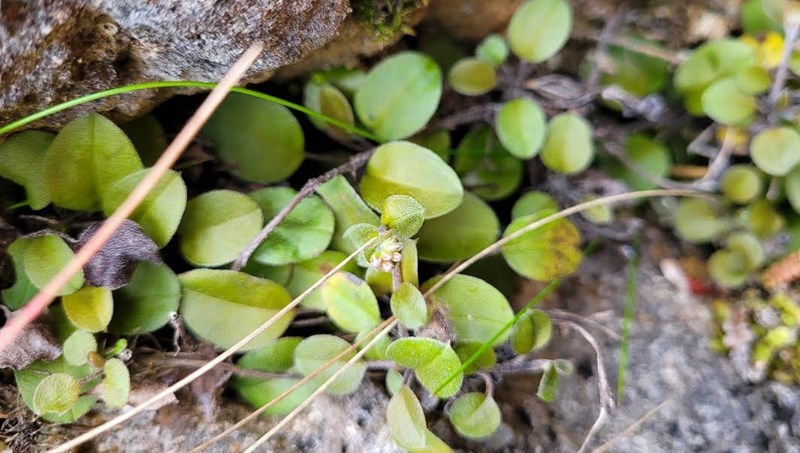
Rare Forget Me Not discovered in Hawkes Bay forest
Tucked away in a plantation forest on the East Coast of the North Island sits one of New Zealand’s most endangered plants.
The Myosotis Petiolata – or the Forget Me Not – is being carefully monitored and nurtured by Rayonier Matariki Forests and Department of Conservation (DOC) staff after its discovery by RMF’s environmental manager, Andy Fleming.
Following DOC and the Hawkes Bay Regional Council’s ecology team contacting RMF for access to its forest to investigate the possibility of a Myosotis Petiolata being present, Andy went hunting for the rare native plant.
DOC had discovered three of the threatened species ten years ago, but two were no longer locatable and it was known that one had perished.
Armed with a description and photograph Andy started looking for a needle in a haystack and was rewarded with the find of one very healthy, but very small, Myosotis Petiolata plant growing in the grassy crevice of a limestone rock.
After the discovery, RMF notified DOC and a plan was made to undertake further investigation. A month later botanists found another plant on the other side of the rock.
With reignited interest a propagation programme for the threatened, nationally critical plant is being established to preserve the species’ genetics, and seeds are being harvested for future growth.
Andy Fleming says both organisations have been regularly visiting the site to monitor and protect the plant.
“These extremely rare plants require specialist knowledge and care to maintain. DOC has been collecting seeds – which are miniscule - and cuttings which are then sent off to a Wellington nursery to be propagated. The cuttings are relatively easy to grow, but not a lot is known about the growing/flowering process of this plant so it’s a slow process,” explains Andy.
“Fortunately, the plant doesn’t seem to have appealed to any wild animals which is a relief given we’ve found evidence of grazing animals around the site. Its biggest threat is being smothered by grass so we do regular weeding and clearing of the area,” says Andy.
As the plant is so rare, not much is known about it in terms of its ideal growing conditions and vulnerabilities but it is hoped that with the help of a DOC-funded camera and data recorder important information will be gleaned.
“If we can establish what is pollinating the plants and timing of flowering, we can take a more active role in ensuring this happens,” says Andy. “If necessary, we will get out there with paint brushes and manually pollinate when the time is right.”
“These two plants have a big weight on their shoulders – to not only survive, but thrive, so we can help the species move from threatened to flourishing,” concludes Andy.
Photo captions: The threatened Myosotis Petiolata has delicate white flowers sitting amongst bronzed ‘mouse-shaped’ leaves.
